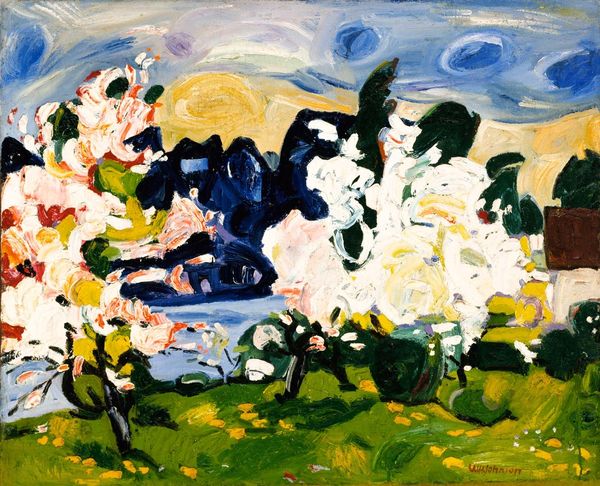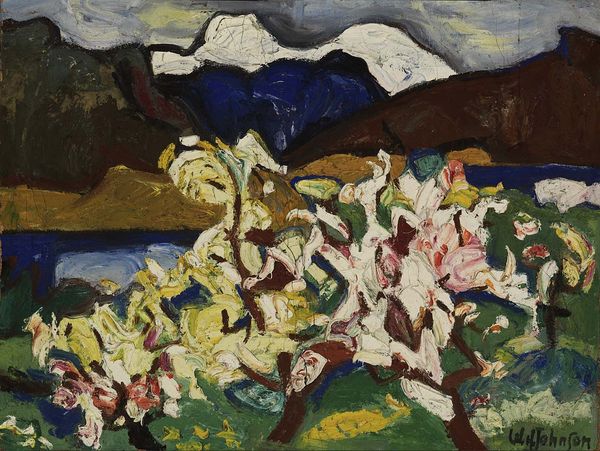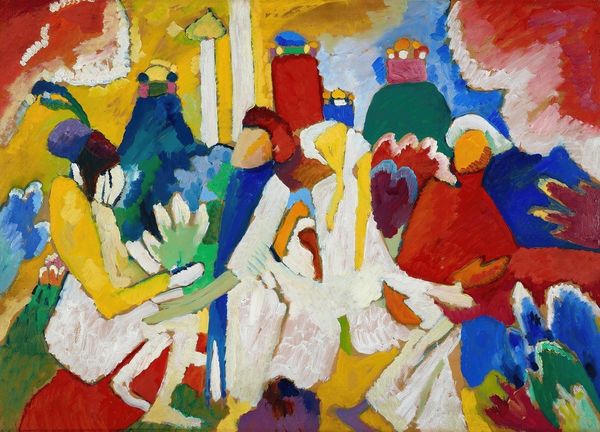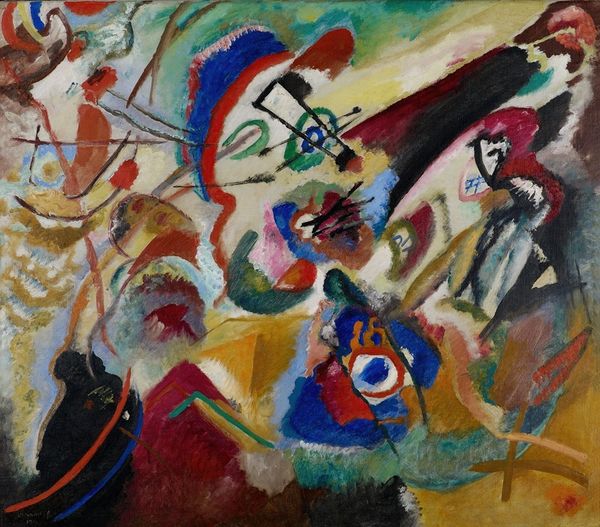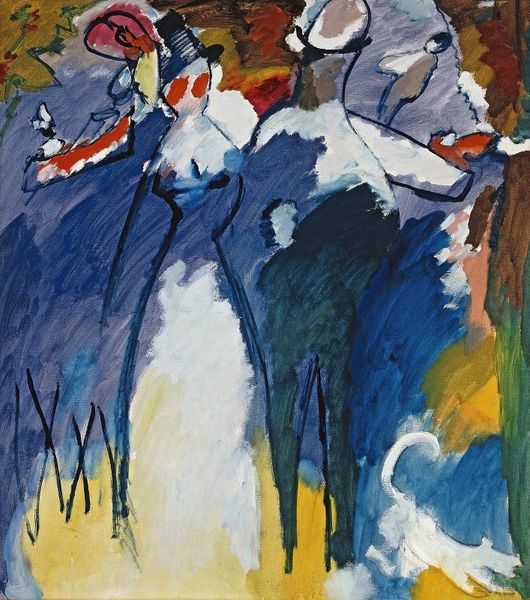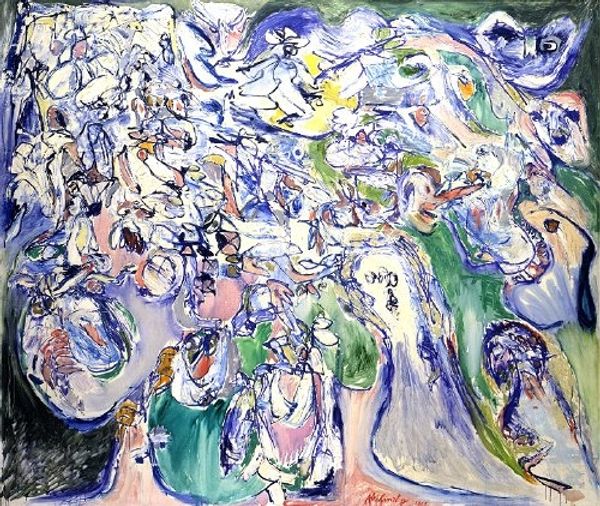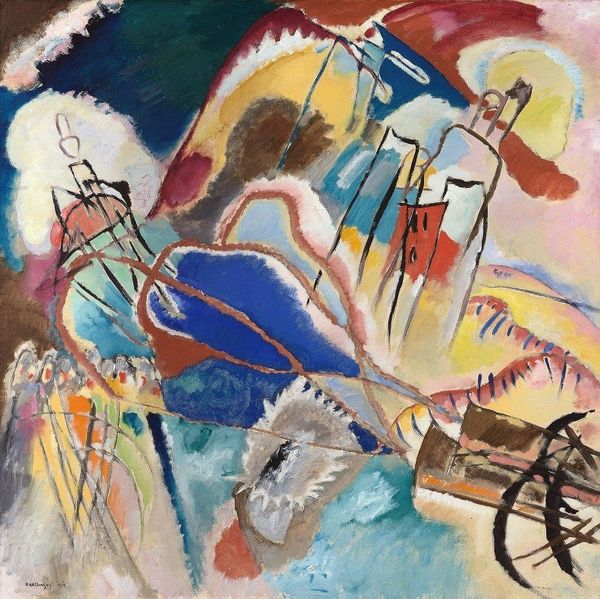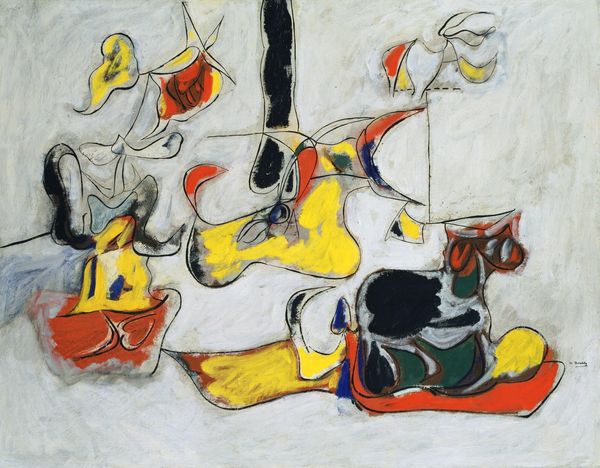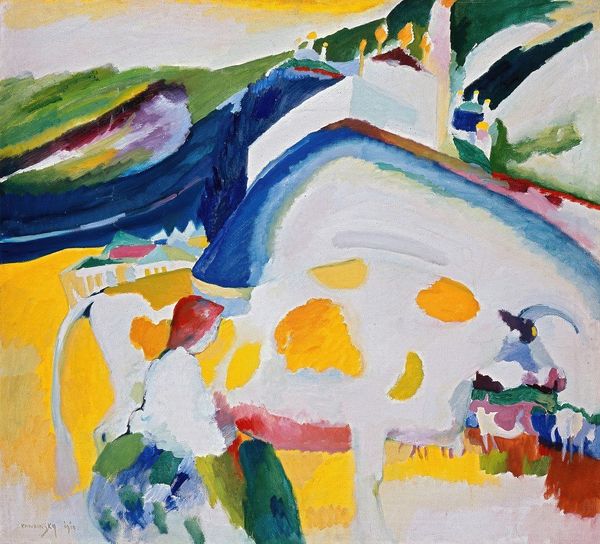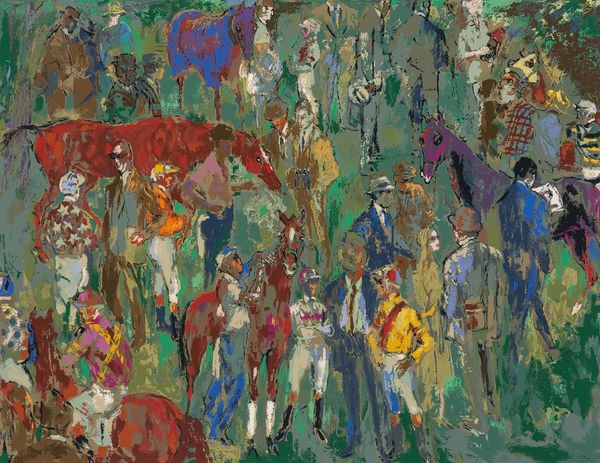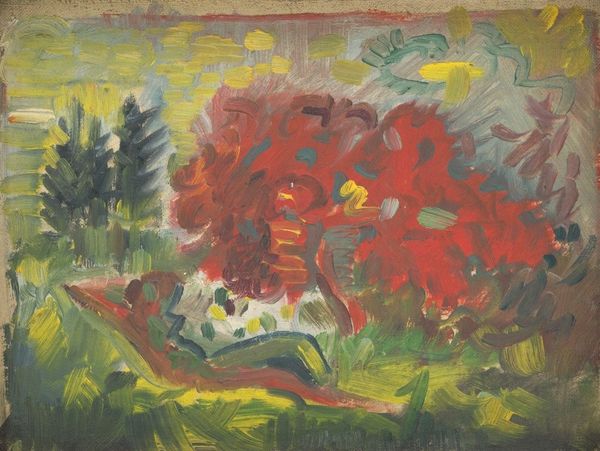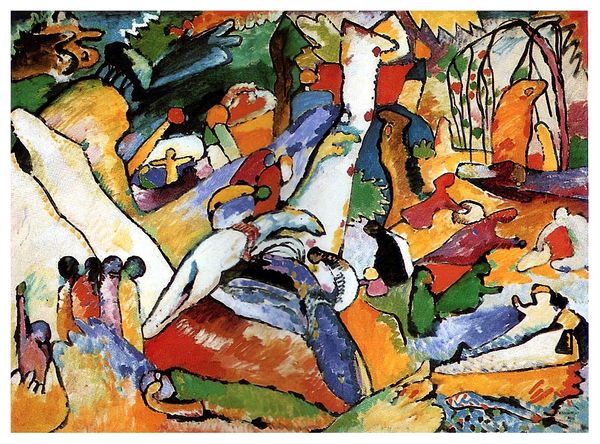
Copyright: William H. Johnson,Fair Use
Curator: Let's discuss William H. Johnson's "Mountain Blossoms, Volda" from 1937. A rather striking piece painted with oil on board. Editor: My immediate impression is… chaotic beauty. The sheer volume of white impasto is almost overwhelming, fighting with other colours to fill the space. There is something charming in the artifice of it. Curator: Indeed. The impasto is critical. It demonstrates Johnson’s method. Notice how he moves away from smooth finishes, engaging in this tactile handling of paint, thick and heavily applied, rejecting traditional art academy ideals for his own direct, more expressionistic handling. It signifies the labor. Editor: From a purely formal perspective, it's fascinating how he uses colour. The deep blues and greens that define the landscape elements against the mass of white blooms create visual tension, whilst flattening the scene and lending to that perceived naivety. Curator: He was very interested in primitivism. His artistic journey was deeply connected to his personal one. After extensive travels in Europe and experiencing the modernist scene firsthand, especially in Scandinavia, Johnson turned toward subjects related to labor and rural life when painting this scene. Editor: And it reads with a certain expressive directness—the simplification of form verging almost on abstraction. Look at that cottage, almost cartoonish in its rendering. The textures create interest. It’s bold! Curator: Think about his social consciousness. During this time, artists like Johnson were reflecting the lives of everyday people, pushing back against academic norms that had historically celebrated the elite. Consider also his cultural heritage influencing his aesthetic choices and how the conditions of labor in Volda are subtly depicted within that colourful, vigorous scene. Editor: Ultimately, it is a captivating landscape that dances between the physical properties of oil paint and the social circumstances of 1930s Norway. It is full of formal tension but reads with vibrancy, an interesting dichotomy for one artwork. Curator: Precisely. This interplay between materiality and social commentary enriches our reading. The visible effort involved in producing the piece becomes inseparable from understanding what Johnson tries to express through it.
Comments
No comments
Be the first to comment and join the conversation on the ultimate creative platform.
